Measuring a handbag may seem like a simple task, but it can be a bit more complicated than you think. Knowing the correct measurements of your handbag is important for various reasons, such as ensuring that it will fit all of your belongings, determining its resale value, and even for online shopping purposes. In this article, we will cover the basics of how to measure a handbag accurately.
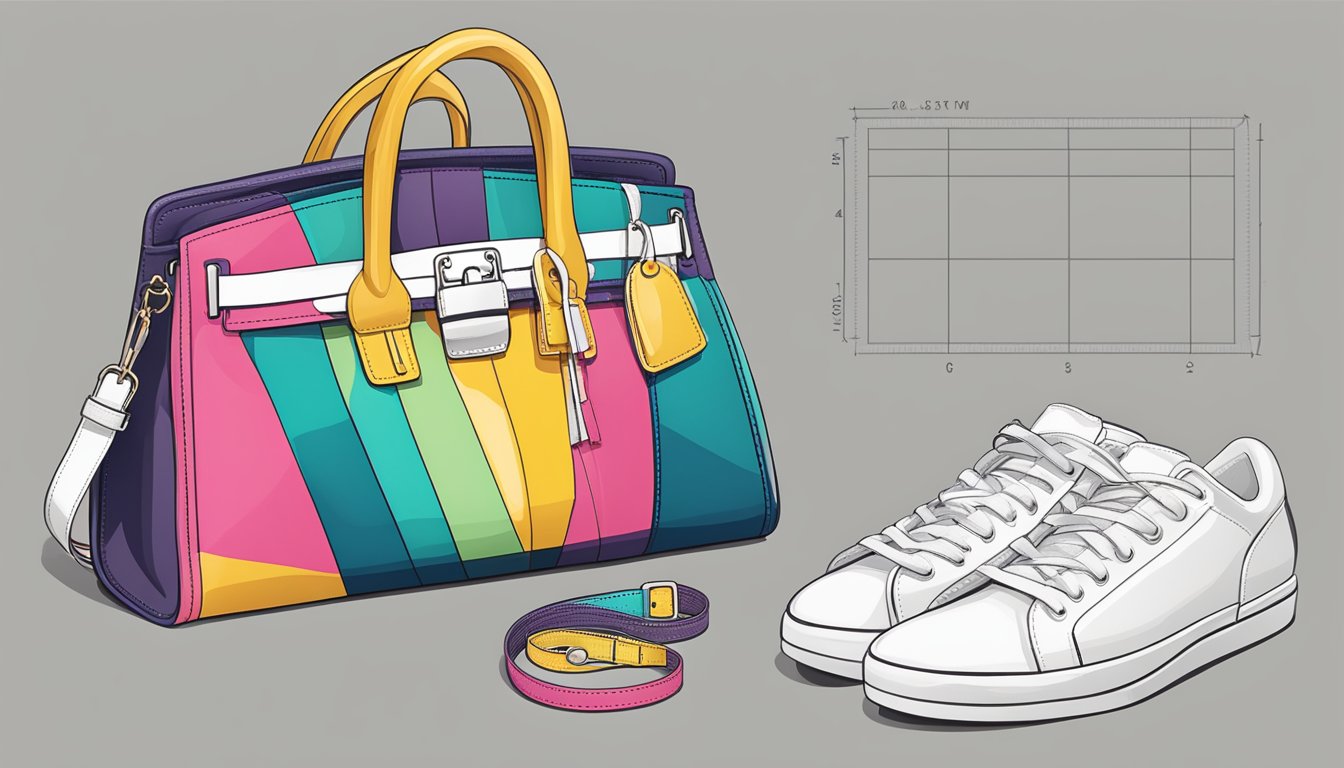
Understanding handbag sizes is the first step in measuring a handbag correctly. Handbags come in different sizes, such as small, medium, and large. However, these size classifications can vary depending on the brand, so it is essential to know the specific measurements for the handbag you are measuring. Typically, handbag sizes are determined by length, height, and width, and these measurements can be found on the product description or tag.
Basic handbag measurements consist of three parts: length, height, and width. Length refers to the measurement of the handbag from left to right, height is the measurement from top to bottom, and width is the measurement from front to back. It is crucial to measure each of these parts accurately to determine the proper size of the handbag. In the next section, we will go over how to measure a handbag step-by-step.
Key Takeaways
- Understanding handbag sizes is the first step in measuring a handbag accurately.
- Basic handbag measurements consist of three parts: length, height, and width.
- Measuring a handbag accurately is essential for various reasons, such as ensuring that it will fit all of your belongings and determining its resale value.
Understanding Handbag Sizes
https://www.youtube.com/watch?v=mjX_xsOpScI&embed=true
When it comes to handbags, size matters. The size of your handbag should be determined by your personal style, the occasion, and the amount of items you need to carry.
Handbag Sizes
Handbags come in various sizes, from small to extra-large. Small handbags are perfect for a night out or when you only need to carry a few items. Medium-sized handbags are great for everyday use and can fit your wallet, phone, and other essentials. Large and extra-large handbags are ideal for travel or when you need to carry a lot of items.
Measuring Handbag Sizes
To measure a handbag, you need to measure its length, height, and width. The length is the longest side of the handbag, the height is the distance from the bottom to the top of the handbag, and the width is the distance from one side of the handbag to the other.
Handbag Size Chart
| Handbag Size | Length (inches) | Height (inches) | Width (inches) |
|---|---|---|---|
| Small | 6-8 | 4-6 | 2-3 |
| Medium | 10-12 | 6-8 | 3-4 |
| Large | 14-16 | 10-12 | 5-6 |
| Extra-Large | 18-20 | 12-14 | 6-8 |
Use this chart as a guide to help you determine the size of the handbag you need. Keep in mind that some handbags may have unique shapes or dimensions that are not included in this chart.
Understanding handbag sizes is essential for selecting the right one. By measuring your handbag and using the handbag size chart as a guide, you can find the perfect handbag for your personal style and needs.
Basic Handbag Measurements
https://www.youtube.com/watch?v=rMHY1cmkKgU&embed=true
When it comes to measuring a handbag, there are a few basic measurements to keep in mind. These measurements will help you determine the size of the bag and whether it will meet your needs.
Length
The length of a handbag is measured from one end to the other, usually from left to right. To measure the length of a handbag, place a tape measure at the base of the bag and measure straight across to the other side. Make sure to measure the widest point of the bag, including any pockets or compartments.
Height
The height of a handbag is measured from the base of the bag to the top of the bag, not including the handles or straps. To measure the height of a handbag, place a tape measure at the base of the bag and measure straight up to the top of the bag.
Depth
The depth of a handbag is measured from the front of the bag to the back of the bag. To measure the depth of a handbag, place a tape measure at the front of the bag and measure straight back to the back of the bag. Make sure to measure the widest point of the bag, including any pockets or compartments.
Capacity
The capacity of a handbag refers to how much it can hold. This is not a measurement that can be taken with a tape measure, but it is an important factor to consider when choosing a handbag. The capacity of a handbag can be affected by its shape, size, and the number of pockets and compartments it has.
By keeping these basic measurements in mind, you can accurately measure a handbag and determine whether it will meet your needs. Remember to measure the widest point of the bag and to take into account any pockets or compartments when measuring the length and depth.
How to Measure a Handbag
https://www.youtube.com/watch?v=3CWuefLmtgA&embed=true
Measuring a handbag may sound like a daunting task, but it’s actually quite simple. All you need is a measuring tape and a flat surface. Here are the steps to measure your handbag:
Measure the length: The length of the handbag is the longest side of the bag, from one end to the other. Place the handbag on a flat surface and measure from one end to the other. Make sure to measure in a straight line, not following the curve of the bag.
Measure the height: The height of the handbag is the distance from the top of the bag to the base. Place the handbag on a flat surface and measure from the highest point to the base.
Measure the width: The width of the handbag is the distance from the front to the back of the bag. Place the handbag on a flat surface and measure from one side to the other.
It’s important to note that some handbags may have different shapes and sizes that may affect the way you measure them. For example, a tote bag may have a wider base than the top, so it’s important to measure both the base and the top separately.
When measuring a purse, make sure to account for any hardware or straps when measuring your purse. Measure them as if they were part of the bag.
Using a measuring tape is the most accurate way to measure a handbag, but if you don’t have one, you can also use a ruler or any other straight object to measure the length, height, and width of the handbag.
Overall, measuring a handbag is an easy process that can help you determine if a bag is the right size for your needs.
Specific Handbag Parts Measurement
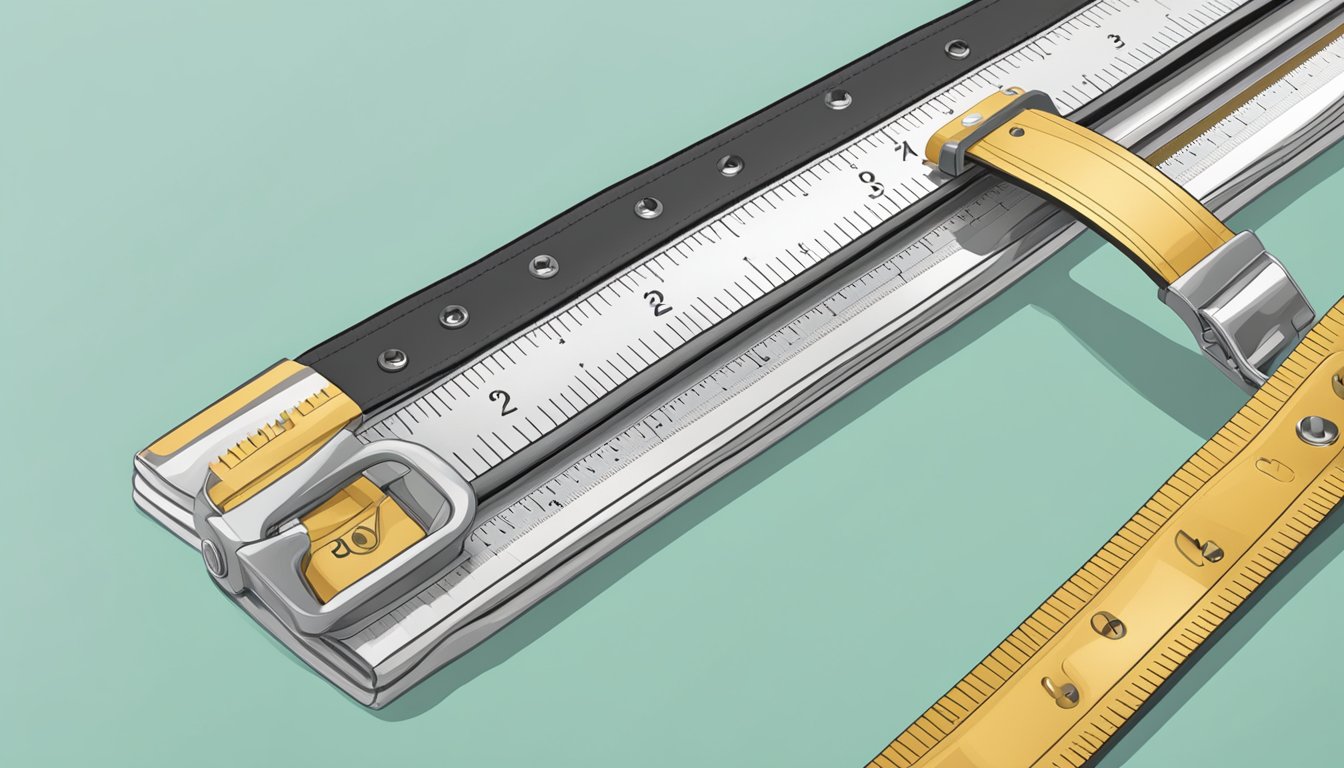
When measuring a handbag, it’s important to take into account the dimensions of specific parts of the bag. Here are some tips on how to measure each part accurately:
Strap and Handle Length
To measure the length of a strap or handle, start at the top of the bag where the strap or handle is attached and measure all the way to the end of the strap or handle. Make sure to measure both the length of the strap or handle and the drop length, which is the distance from the top of the strap or handle to the top of the bag.
Wallet and Opening Dimensions
When measuring the dimensions of a wallet or opening, measure the width and height of the opening of the bag where you can access the contents of the bag. This will give you an idea of how much space you have to work with when putting items in and taking them out of the bag.
Sides and Widest Point
To measure the width of a handbag, measure the distance between the two widest points of the bag. This will give you an accurate measurement of how wide the bag is. When measuring the sides of a bag, measure from the top of the bag to the bottom of the bag on each side.
Strap Drop and Strap Length
The strap drop is the distance from the top of the strap to the top of the bag. This measurement is important if you want to wear the bag on your shoulder. The strap length is the total length of the strap, including the drop length.
Bag Dimensions
The dimensions of a handbag are usually listed as length (L) x height (H) x depth (D). This provides a simple and concise way to express the size of a bag in a standardized format. It’s important to note that the specific format used is often referenced beside the measurements on a bag’s product description or specifications for clarity.
By taking accurate measurements of specific parts of the bag, you can ensure that you find the perfect handbag that fits your needs and style.
Importance of Accurate Handbag Measurements
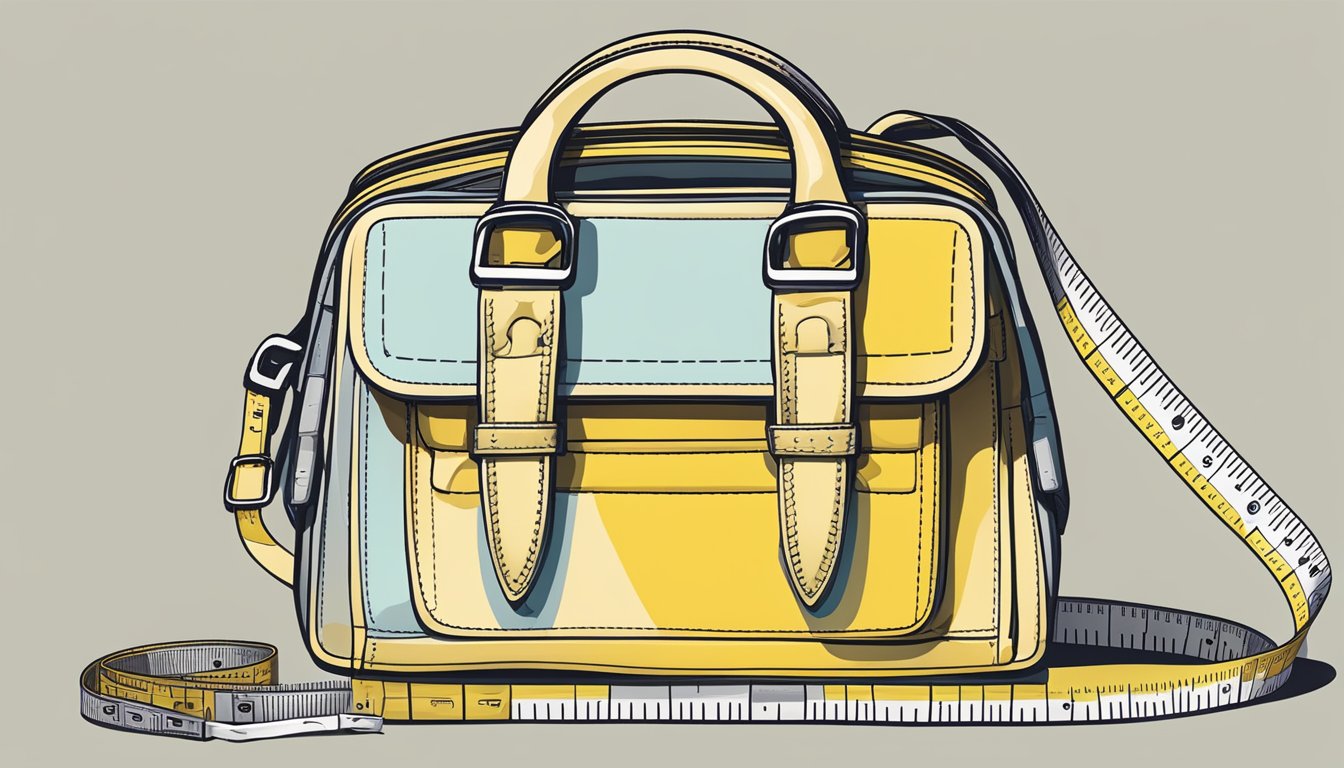
When it comes to handbags, accurate measurements are crucial. Whether you’re shopping online or in-store, knowing the size of the bag you’re interested in can help you make an informed decision.
One of the main reasons why accurate handbag measurements are important is because they can affect the bag’s aesthetic appeal. If a bag is too small or too large for your frame, it can look awkward and unflattering. On the other hand, a bag that fits you perfectly can enhance your appearance and complement your outfit.
Another reason why accurate measurements matter is comfort. If a bag is too heavy or too big, it can be uncomfortable to carry around all day. By knowing the exact size and weight of a bag, you can ensure that it will be comfortable to wear, even when it’s filled with all your essentials.
Accurate measurements can also affect the storage space, volume, and capacity of a bag. Knowing the bag’s dimensions can help you determine how much you can fit inside, and whether it has enough compartments and pockets to keep your items organized.
When shopping for a bag online, it’s especially important to pay attention to the measurements provided by the retailer. Without being able to physically handle the bag, you need to rely on the dimensions given to you. Make sure to read the product descriptions carefully and take note of the measurements provided.
In summary, accurate handbag measurements are crucial for both online shopping and physical measurements. They can affect the bag’s aesthetic appeal, comfort, storage space, volume, capacity, compartments, interior, and internal capacity. By paying attention to the measurements, you can ensure that you find a bag that fits your needs and looks great.
Additional Considerations
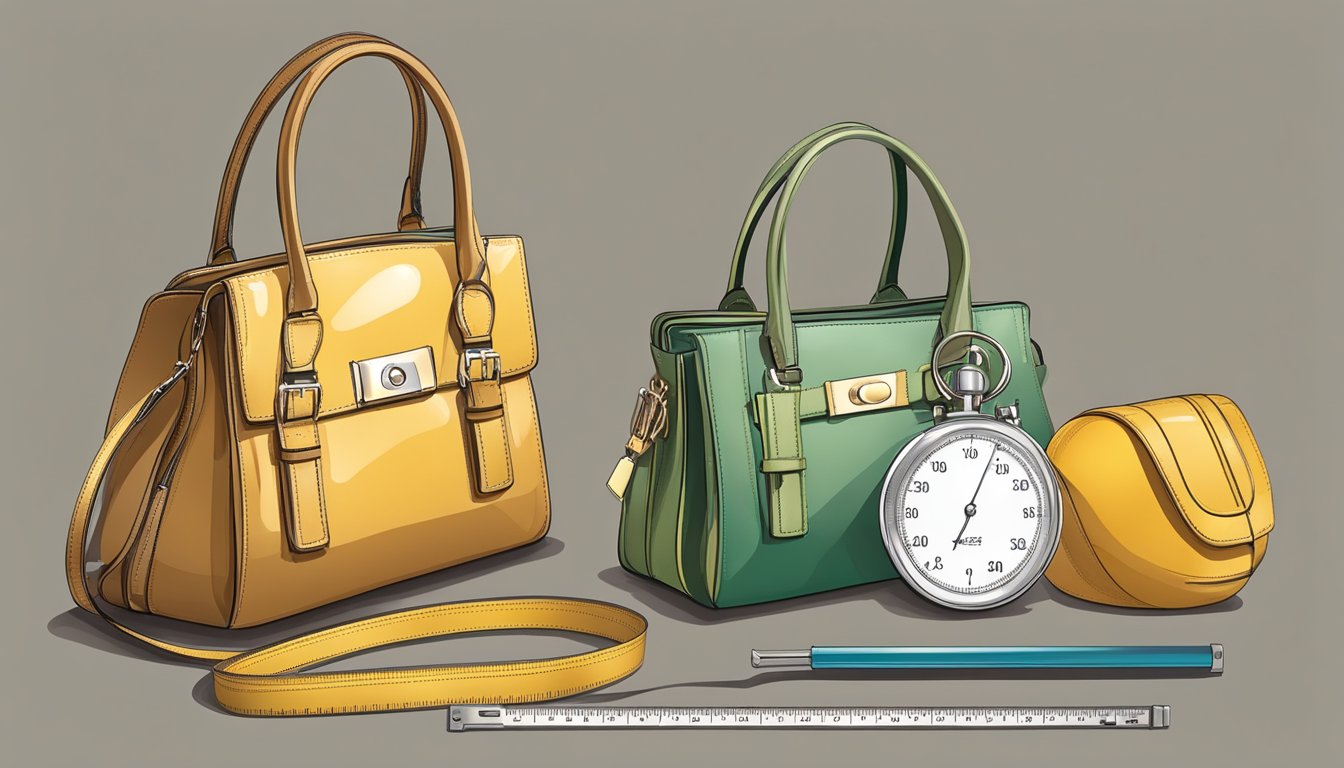
When measuring a handbag, there are a few additional considerations to keep in mind to ensure you get the most accurate measurement possible.
Consider the Shape of the Purse
The shape of the purse can affect how you measure it. For example, if you’re measuring a mini bag, you may need to use a ruler to get an accurate measurement of the length and breadth. On the other hand, if you’re measuring a shoulder bag with a long strap, you’ll need to measure from the top of the strap to the bottom of the bag.
Think About the Drop
The drop is the distance between the top of the bag and the top of the strap. When selecting a handbag, it’s important to consider the drop to ensure that the bag sits comfortably on your torso. If the drop is too long, the bag may hang too low, causing discomfort and strain. If the drop is too short, the bag may sit too high, making it difficult to access the contents.
Look for Adjustable Straps
If you’re looking for a handbag with more flexibility, consider a bag with adjustable straps. This will allow you to adjust the drop to your liking, ensuring that the bag sits comfortably on your torso.
Consider the Size of the Bag
When selecting a handbag, it’s important to consider the size of the bag. If you’re looking for a large size bag, you may want to look for a bag with a long strap that can be worn cross-body. This will distribute the weight of the bag more evenly, making it more comfortable to carry.
Think About the Price
Finally, when selecting a handbag, it’s important to consider the price. Handbags can range in price from a few dollars to thousands of dollars. While a more expensive bag may offer higher quality materials and craftsmanship, it’s important to choose a bag that fits within your budget.
By keeping these additional considerations in mind, you’ll be able to select a handbag that is comfortable, functional, and fits your style and budget.
Frequently Asked Questions
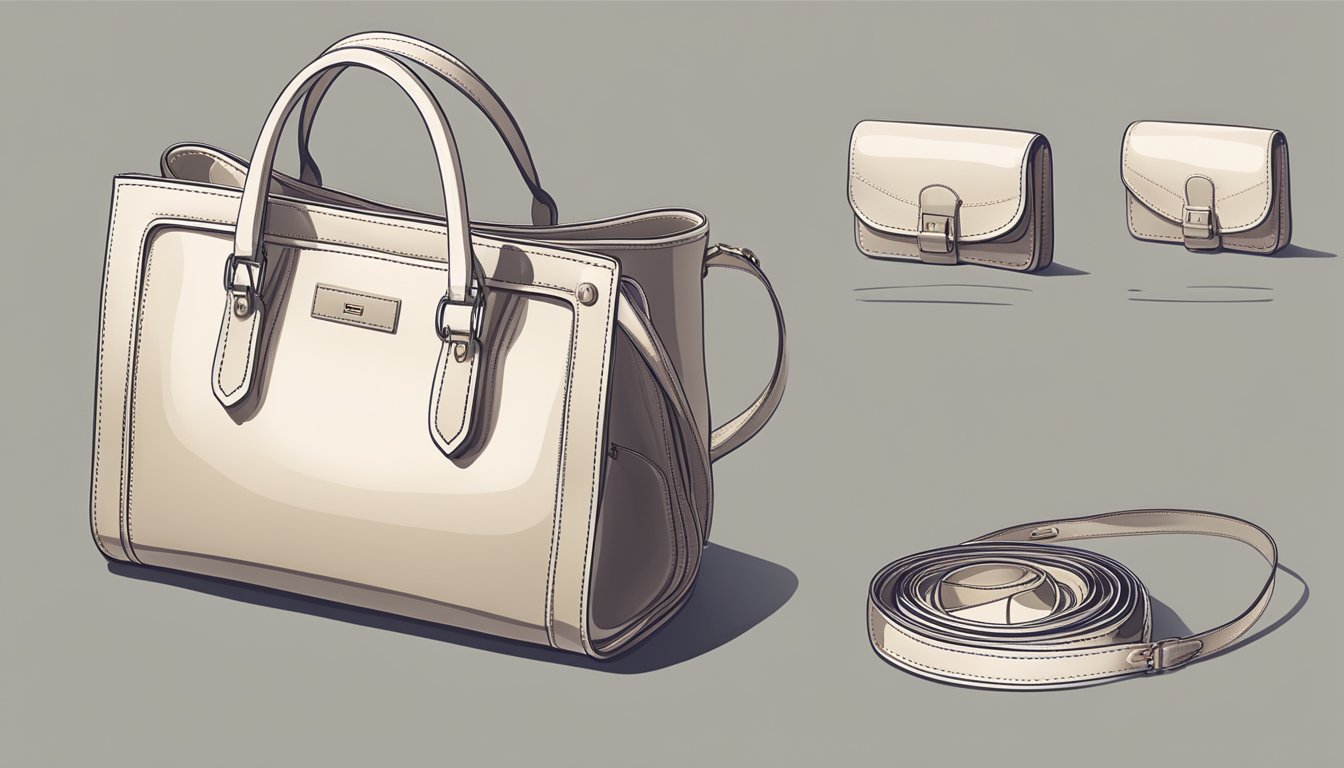
What are the standard measurements for handbags?
Handbags come in various sizes, but there are some standard measurements to consider. The most common measurement is the length, width, and height of the bag. These measurements are usually expressed in inches or centimeters. The size of a small handbag can range from 6 inches (15 cm) to 10 inches (25 cm) in length, 4 inches (10 cm) to 8 inches (20 cm) in height, and 2 inches (5 cm) to 4 inches (10 cm) in width. On the other hand, a large handbag can be up to 18 inches (45 cm) in length, 12 inches (30 cm) in height, and 6 inches (15 cm) in width.
How do I measure the length, width, and height of a handbag?
To measure the length, width, and height of a handbag, you will need a flexible measuring tape. Measure the length of the bag from one end to the other, the width across the widest point, and the height from the base to the top of the bag. Make sure to measure the bag from the outside and not from the inside.
What is the best way to measure the depth of a handbag?
To measure the depth of a handbag, place the bag on a flat surface and measure from the bottom of the bag to the highest point of the bag. This will give you the depth of the bag.
Can I measure the width of a handbag across the bottom?
Yes, you can measure the width of a handbag across the bottom. Place the bag on a flat surface and measure from one end of the bottom to the other end. This will give you the width of the bag across the bottom.
How do I measure the length of a handbag handle?
To measure the length of a handbag handle, measure from one end of the handle to the other end. This will give you the total length of the handle.
Is there a tool or app to help measure handbags accurately?
Yes, there are some tools and apps available to help measure handbags accurately. Some online stores have a size chart that can help you choose the right size of handbag. There are also apps that use augmented reality to help you visualize how a handbag will look on you. However, the most accurate way to measure a handbag is still by using a flexible measuring tape.
